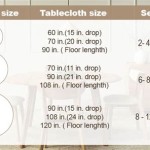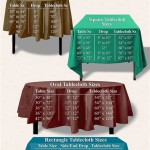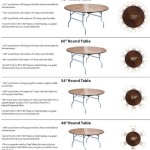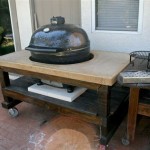Dining Table With Loveseat: An Alternative to Traditional Seating
The conventional dining room often features a rectangular or round table surrounded by individual chairs. While this arrangement is functional and familiar, alternative seating options are gaining traction, offering novel aesthetics and functional advantages. One such option is incorporating a loveseat, a small sofa designed for two people, as part of the dining table seating arrangement. This article will explore the concept of using a dining table with a loveseat, examining its benefits, design considerations, potential drawbacks, and factors to consider when integrating this unconventional seating choice into a dining space.
The integration of a loveseat at a dining table presents a departure from traditional seating norms. This arrangement typically involves placing the loveseat along one side of the table, opposite individual chairs or benches. The loveseat can offer a more relaxed and intimate dining experience compared to individual chairs, especially for couples or small families. However, careful consideration must be given to ensure the arrangement is both aesthetically pleasing and ergonomically sound.
Benefits of Using a Loveseat at the Dining Table
Employing a loveseat as part of the dining room seating arrangement offers several potential benefits, ranging from increased seating capacity to enhanced aesthetic appeal. These advantages contribute to a unique and potentially more comfortable dining experience.
Increased Seating Capacity: Loveseats inherently offer more seating space than individual chairs. A standard loveseat can comfortably accommodate two adults, effectively doubling the seating capacity along one side of the dining table. This is particularly useful for smaller dining spaces where maximizing seating is crucial without overcrowding the room with multiple individual chairs.
Enhanced Comfort: Loveseats are typically upholstered and padded, offering a more comfortable seating experience compared to hard, wooden chairs. This increased comfort can encourage longer, more leisurely meals and conversations around the dining table. The soft cushioning and supportive backrest of a loveseat can be particularly appealing for individuals who find prolonged sitting on traditional chairs uncomfortable.
Aesthetic Appeal: Integrating a loveseat can introduce a unique design element to the dining room. The visual contrast between the loveseat and individual chairs can create a more dynamic and interesting aesthetic. The loveseat can also serve as a focal point, adding a touch of sophistication and elegance to the dining space. The upholstery material and style of the loveseat can be chosen to complement the overall décor of the room, further enhancing its aesthetic appeal.
Space Saving: In certain situations, a loveseat can contribute to better space utilization. Unlike individual chairs that require space around them for movement, a loveseat occupies a fixed footprint. This can be advantageous in narrow dining rooms or spaces where maximizing usable floor area is a priority. The streamlined design of a loveseat can also create a sense of openness, preventing the dining area from feeling cluttered.
Creates Intimacy: A loveseat naturally fosters a sense of closeness and intimacy between the individuals seated on it. This can be particularly desirable for couples or close family members who enjoy sharing meals in a more intimate setting. The shared seating arrangement encourages closer physical proximity and facilitates easier conversation, enhancing the overall dining experience.
Factors to Consider When Choosing a Loveseat for the Dining Table
Selecting the right loveseat for a dining table requires careful consideration of several factors to ensure a harmonious and functional arrangement. Height, style, material, and overall dimensions must be carefully assessed to create a comfortable and aesthetically pleasing dining space.
Height and Ergonomics: The height of the loveseat is paramount to ensuring comfortable dining. The seat height should be compatible with the table height, allowing individuals to sit comfortably and reach the table without straining. Ideally, there should be ample legroom beneath the table, and the seat height should allow for proper posture while eating. This often requires selecting a loveseat with a higher seat than a typical living room loveseat. Standard dining chair seat heights range from 17 to 19 inches, so the loveseat's seat should ideally fall within this range or be slightly higher depending on the table's apron height.
Style and Design: The style of the loveseat should complement the overall aesthetic of the dining room and the dining table itself. Whether the room features a modern, traditional, or eclectic design, the loveseat should seamlessly integrate into the existing décor. Considerations should be given to the shape, upholstery, and detailing of the loveseat. A sleek, minimalist loveseat might be suitable for a modern dining room, while a more ornate, upholstered loveseat might be better suited for a traditional setting.
Material and Durability: The material of the loveseat should be durable, easy to clean, and resistant to spills and stains. Dining areas are prone to food and drink mishaps, so selecting a material that can withstand these incidents is crucial. Leather, faux leather, and stain-resistant fabrics are popular choices for dining room seating. The frame of the loveseat should also be sturdy and well-constructed to ensure long-term durability.
Size and Dimensions: The size of the loveseat should be proportionate to the size of the dining table and the overall dimensions of the dining room. A loveseat that is too large will overwhelm the space and make it difficult to move around. Conversely, a loveseat that is too small will appear insignificant and won't provide adequate seating. Careful measurements should be taken to ensure the loveseat fits comfortably within the dining area without obstructing walkways or creating a cluttered appearance.
Back Support: Consider the back support offered by the loveseat. While comfort is key, adequate back support is essential for maintaining good posture during meals. Loveseats with higher backrests and lumbar support are generally preferable for dining. Avoid loveseats with excessively reclined backrests, as these can make it difficult to reach the table comfortably.
Potential Drawbacks and Solutions
While using a loveseat at the dining table offers several advantages, potential drawbacks must also be considered. These challenges can be mitigated with careful planning and selection of the appropriate loveseat and table combination.
Limited Individual Space: Sitting on a loveseat inherently reduces the amount of personal space compared to individual chairs. Individuals seated on the loveseat will be in closer proximity to each other, which may not be comfortable for everyone. This can be addressed by selecting a wider loveseat that provides more individual seating space or by using additional individual chairs on the opposite side of the table to offer more personal space options.
Difficulties with Movement: Getting in and out of a loveseat can be more challenging than getting in and out of a chair, especially for individuals with mobility issues. This can be mitigated by selecting a loveseat with a firmer seat and higher armrests to provide more support when standing up. Ensuring adequate space around the dining table also helps facilitate easier movement.
Uneven Weight Distribution: If only one person is seated on the loveseat, the weight distribution can be uneven, potentially causing discomfort. This can be minimized by selecting a loveseat with a well-constructed frame and supportive cushioning that maintains its shape even when weight is unevenly distributed. Encouraging even seating distribution can also help alleviate this issue.
Cleaning Challenges: Loveseats, especially those upholstered in fabric, can be more difficult to clean than individual chairs. Spills and stains can be challenging to remove from upholstery, requiring specialized cleaning products and techniques. Selecting a loveseat with stain-resistant upholstery or using protective covers can help mitigate this issue. Regularly cleaning the loveseat and promptly addressing spills is also crucial.
Potential Obstruction: A loveseat positioned against a wall might partially obstruct access to outlets or other wall-mounted features. Careful planning of the dining room layout can help avoid this issue. Ensuring that outlets and other essential features are easily accessible even with the loveseat in place is crucial for maintaining functionality.
Ultimately, the decision to use a dining table with a loveseat is a personal one that depends on individual preferences, lifestyle, and the specific characteristics of the dining space. By carefully considering the benefits, potential drawbacks, and factors outlined in this article, individuals can make an informed decision and create a dining environment that is both aesthetically pleasing and functionally appropriate. Careful selection of the loveseat, attention to ergonomic considerations, and thoughtful planning of the dining room layout are all essential for successful integration of this unconventional seating option.

Cozy Up To A Loveseat At The Table

Elton Settee At Dining Table Room Cozy Small Inspiration

Love The Loveseat Dining Table Room Decor

Result For Loveseat Dining Table Room Small Breakfast Nook Furniture

Bright Design Ideas For Breakfast Nook Dining Room Corner

Living Room Meets Dining The New Way To Eat In

Dining Room Transitional Dc Metro By Rachel Reider Interiors Houzz

Blue Leather French Dining Settee Design Ideas

Banquettes How To Get The Look With A Sofa Loveseat Or Settee

Dining Table Armless Settee Design Ideas
Related Posts








